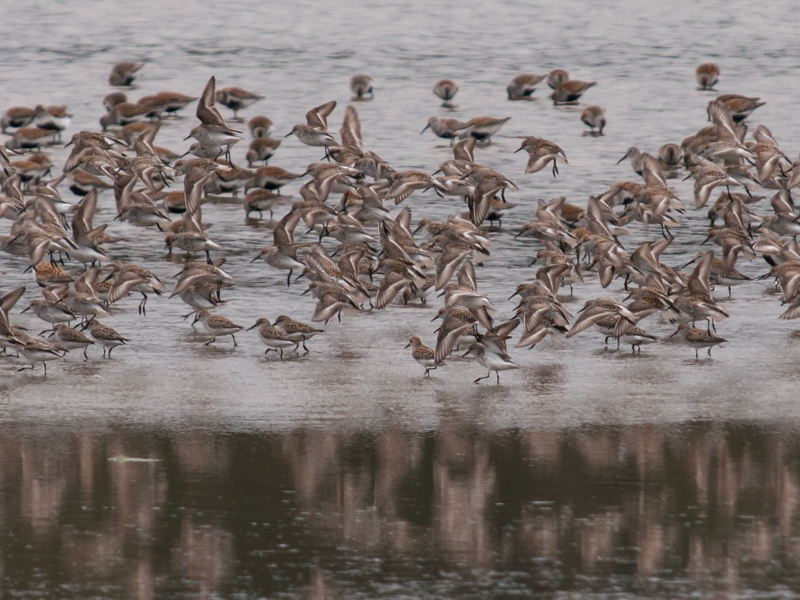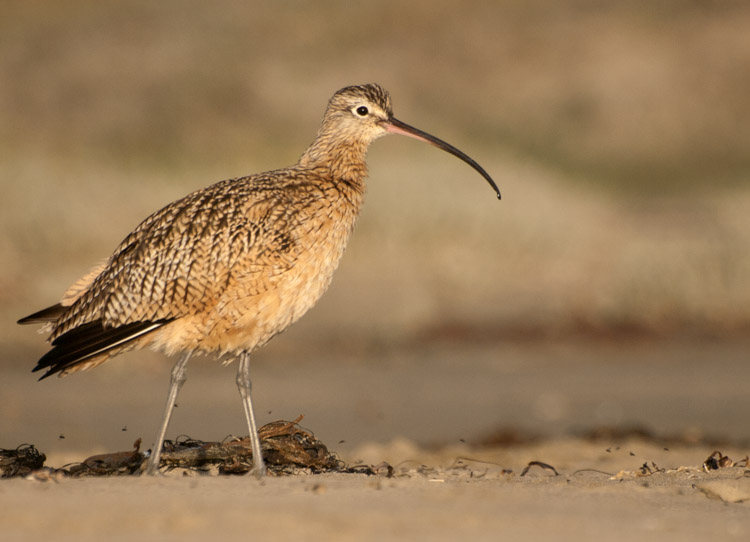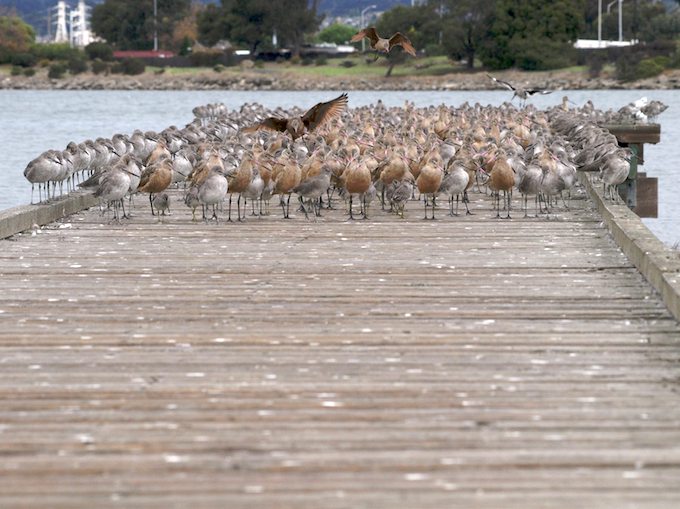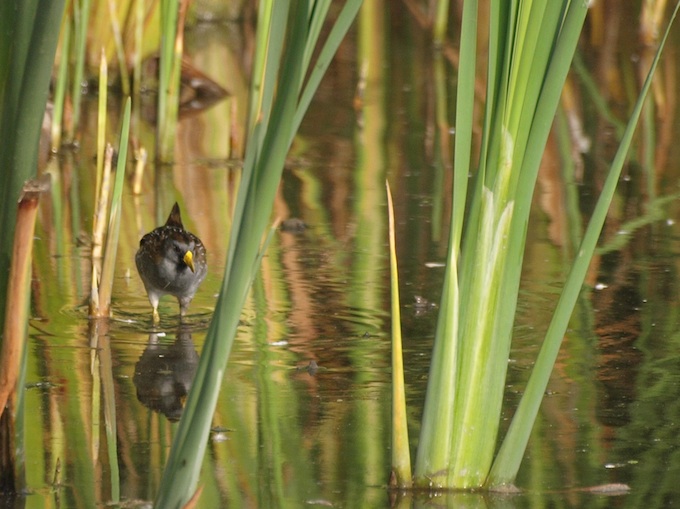Last month, Hugh and I took a spontaneous and soggy photo walk through Grays Harbor National Wildlife Refuge in Hoquiam, Washington. For a few weeks at the end of April and beginning of May, hundreds of thousands of migrating sandpipers, Dunlins, plovers, dowitchers and Red Knots feed and rest on the Refuge’s mud flats and…
Birds Flying High … You Know How I Feel
[My homage to Nina Simone, in the form of blurred wings and texturized Dunlins.] When thousands of shorebirds frolic on the mire, their wingbeats rattle like seashells strung in the wind … just the lightest of chimes, near silent except for the rush of air over 15,000 pairs of wings. They become a coil, spiraling…
Post Processing, Realism + Conceptualism: A Postscript
Long-billed Curlew photographed at sunset, on the dunes at Morro Strand State Beach in California. These thoughts are an extension of the discussion that began under my piece on post-processing. Thanks to my blogging friends who shared their methodologies and perspectives, initiating some thought-provoking explorations of realism in photography. I heard a lecture recently where…
Studies in Godwit
Every so often, I get a request for ‘derivative works’ permission — usually from a wildlife artist who wants to use a photo as the foundation for a painting or print. I particularly love it when the work is used to benefit an animal cause … like this painting of a Brown Pelican I photographed…
Sandy Shorebill
At this point in my California life, I’d be chugging caffeine before the sun comes up, and getting to my favorite shorebird sanctuaries and mudflats as the light turns magenta rose …
Parenting, Avocet Style
American Avocet = Recurvirostra americana These images of American Avocets were shot over the past two nesting seasons. I’m particularly careful when photographing nesting birds or young, and will not intrude if my presence causes any disturbance or danger. Most of these photos were captured at Palo Alto Baylands, from a public pathway. The burnt…
Shorebird Nation Rises Again
Ever since I picked up a telephoto lens and aimed it at my first non-human earthling, my seasons have morphed into migration schedules. Winter = Ducks. Spring= Babies. Fall (best time of all) = Shorebirds. I used to be an urban-girl-night-person — before I knew what I was. Autumn was: early darkness, early cocktails. Schlepping…
Seeing the Sora
You’ll hear Soras more often than you’ll see them. But once in a while you’ll be lucky enough to experience both — when the characteristic Sora call precedes a visual of the Sora wading through the shallows. Soras are in the rail family, not rare, even if they are elusive. They share a lineage with…
Wildlife & Nature Photography Ethics
“Responsible wildlife photographers observe a strict code of ethics. The cardinal rule: if anything you do directly or indirectly endangers, restricts or harasses an animal, stop and leave the animal alone. The integrity of a wildlife photograph evaporates if the subject was not free to come and go, if it shows fear or anxiousness, if…
More Alameda Terns: Caspian, Forster’s, Least Terns
Take a look at this image of terns — not because it’s anything spectacular. In fact, those terns were but specks on my visual horizon, so this is a dramatic crop to show just one thing: the size differential between the Caspian Terns and the Forster’s Terns I wrote about in a previous post. The…








